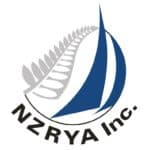What race management systems exist in radio yachting around the world? What systems are used for other yacht classes’ large events, Olympic regattas? What experiences and knowledge do IOM owners have of the systems?
When we undertook to organise the 2018 South Island Champs, Bruce and I realised we didn’t know enough about running the SHRS race management system.
This IOM Talk Article aims to find out how much IOM owners know and can share to help all of us be more informed about our racing.
- What management systems are used by IOM fleets around the World, in their club and local open events?
- And, in their national events?
- And, regional and the World Champs?
- Do these events get enough racing into the programme?
- How well do skippers understand the systems?
- Do you know someone with experience, or what experience do you have of systems outside of New Zealand?
- Have you found any useful, informative websites?
American Scene
It is interesting how different classes use different systems: For example, “Odds and Evens” is predominantly used by SeaWind while IOMs use HMS. Both classes use software to do the calculations required by the rules. As in New Zealand, the American MYA Regatta Guidelines do not tie event managers to a particular heat system but does suggest, with reasons, the Matrix system should not be used.
My beloved GP14 in the UK has evolved its open events around the country, through to the World Championships for skippers to qualify for each of Platinum, Gold or Silver, etc., prizes. However, all boats race together in the event which usually has two races a day with one discard for 4 or more races. The criteria for fleet qualification are:
Fleet Allocation Guidance:
Gold
A competitor with aspirations of winning the event. For National/Inland Championships or Grand Prix overall results a competitor would generally have a track record of winning an Area championship or a top 10 position in a UK National Championship or a top 5 position in an Inland Championship.
Silver
An experienced dinghy racer with aspirations of finishing in the top half of the fleet. For National/Inland Championships or Grand Prix overall results the sailor may have been successful at open meeting or area level but has yet to finish in the positions described as a Gold fleet sailor.
Bronze
A bronze fleet competitor is likely to have a track record of finishing in the bottom half of the fleet or be new to dinghy racing.
The Platinum category is a small, top group of skippers in the Nationals or Worlds.
Finally, our own IOM World Championships of course, currently uses the HMS promotion / relegation system. The sailing instructions spell out the way in which boats are allocated to the first race heats (Rule 9) and some other interesting rules about sailing in the wrong heat (Rule 14) and the protest system SYRPH (Rule 13.3). Bruce is stoked to see his “Gold Card” prize idea listed at this prestigious event: First Master (55 – 64 years), Grand Master (65-69years) and Great Grand Master (70 or more years).
For our own racing in New Zealand, NZRYA policy provides event managers with two choices: The Heat Management System and the Simple Heat Racing System. More about that in the next two IOM Talk articles.
